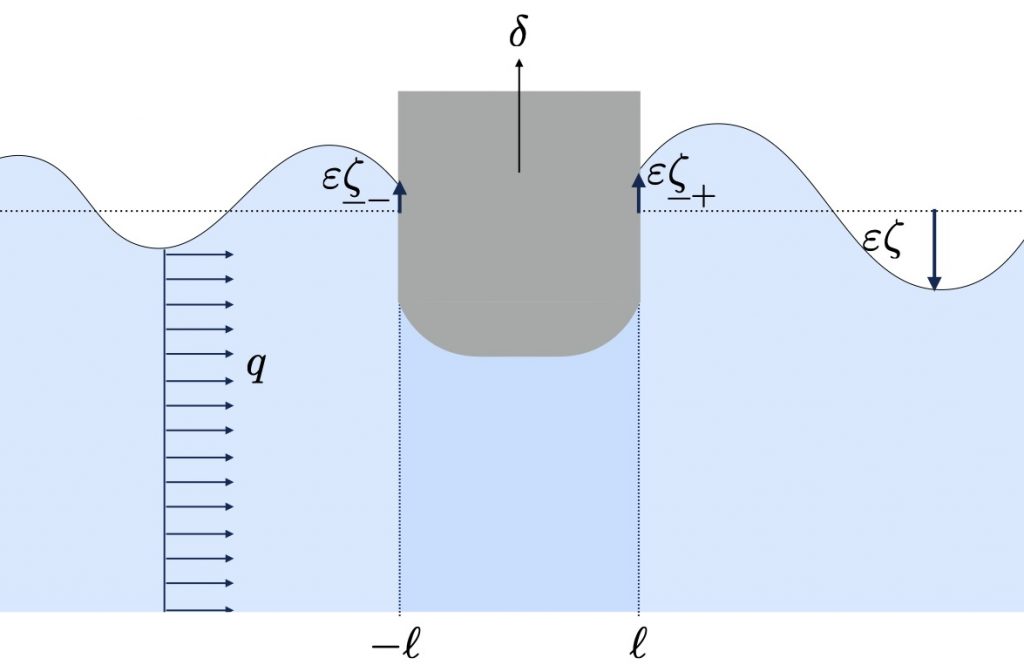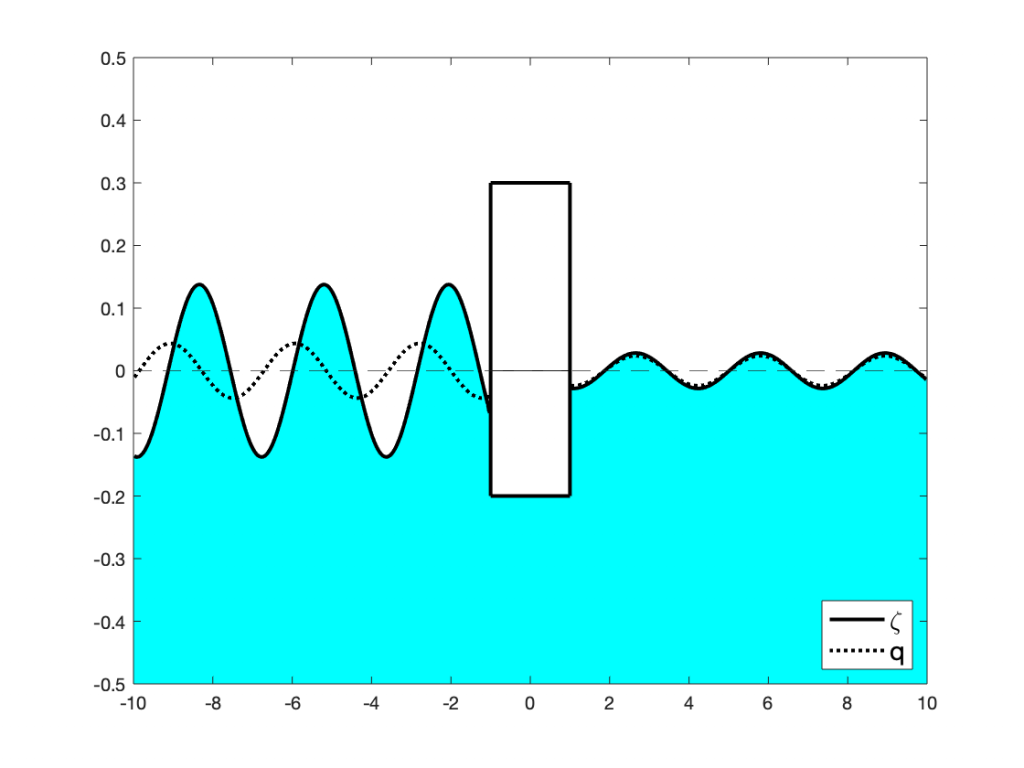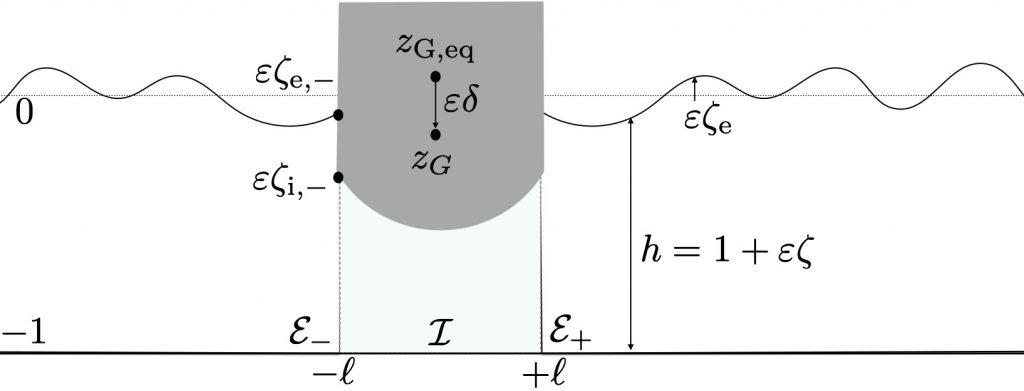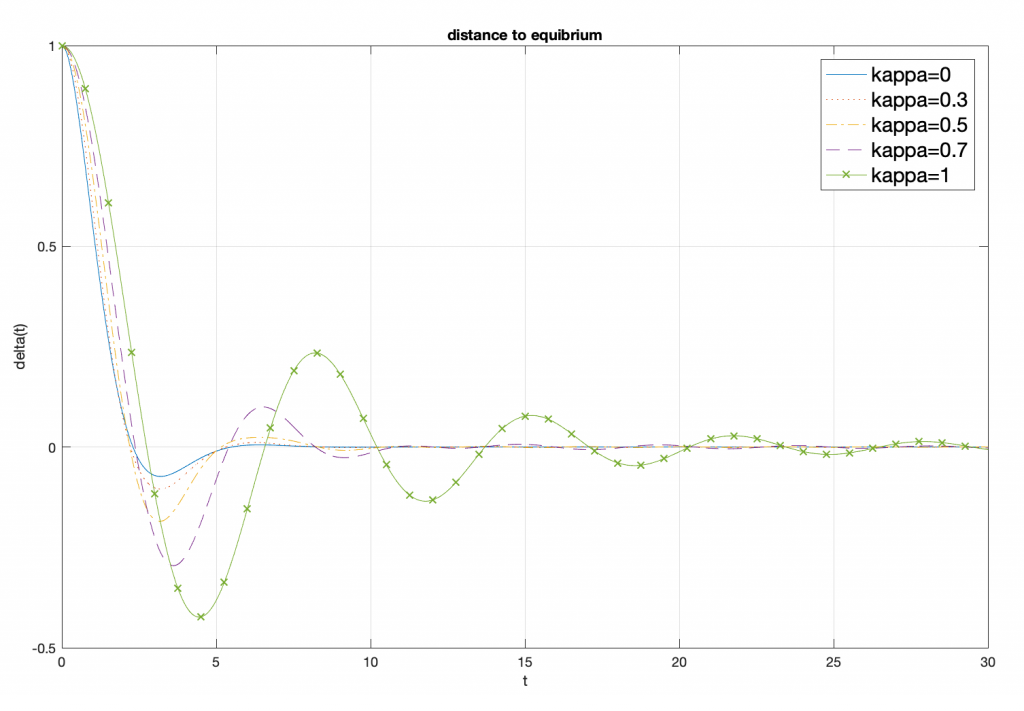M. Rigal, P. Bonneton, D. Lannes. Download
We present a novel approach to handle open boundary conditions for a Boussinesq-
type wave model coupled with the nonlinear shallow water equations. Traditional
methods for managing open boundaries — such as sponge layers and source
functions — are computationally intensive and require ad hoc calibration. To
address this, we reformulate the Boussinesq equations as a system of conservation
laws with nonlocal flux and a rapidly decaying source term. This reformulation is
adapted to generate waves at the boundary of the numerical domain, from surface
elevation data in situations where both incoming and outgoing waves are present.
The proposed numerical scheme employs a MacCormack prediction-correction
strategy combined with finite volume and finite difference methods, preserving
key physical properties and ensuring stability. Comparison with laboratory
experiments demonstrates that our approach avoids boundary reflection issues.
In particular, it is able to accurately reproduce infragravity waves associated
with a random wave field propagating over a sloping beach. This work opens
important perspectives for improving phase-resolving coastal wave models, with
the aim of forecasting complex random wave conditions in natural environments












